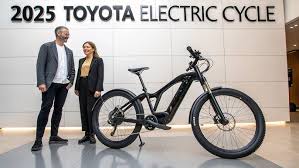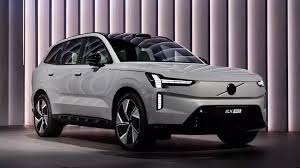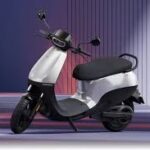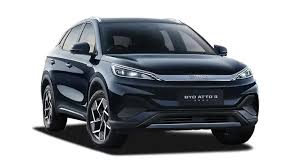Introduction
Toyota — with a world-renowned reputation for dependable automobiles and hybrid technology — has entered the electric bicycle market, announcing an ambitious expansion of its e-mobility presence. Its new electric bicycle represents Toyota’s attempt to couple sustainable technology with individual city mobility, addressing growing demand for lightweight, efficient, and environmentally friendly commutes. Engineered for urban commuters as well as long-distance riders, Toyota Electric Cycle combines the brand’s precision engineering with mobility intelligence of the future.
Key Features
- 400 km Single-Charge Range: Toyota’s e-cycle guarantees an industry benchmark range, driven by a next-gen battery pack that delivers maximum energy density with minimal weight — a marked improvement over traditional e-bikes with 100–150 km range.
- 2-Hour Fast Charging: Fitted with Toyota’s own rapid-charging technology, the battery can be charged from 0 to 100% in just 2 hours and is best suited for daily commuters and long-distance users.
- Ultra-Lightweight Smart Design: Made from aerospace-grade aluminium alloy and carbon composite materials, the chassis is strong yet featherlight. It features a digital smart dashboard, AI-based ride monitoring, and self-learning terrain optimisation.
Toyota’s Diversification & E-Mobility Strategy
- Strategic Foray Beyond Automobiles: Toyota’s entry into the e-cycle category adds to its current hybrid, hydrogen, and electric vehicle portfolio — expanding its green mobility strategy to smaller, individual mobility vehicles.
- Gunning for Global & Indian Markets: Toyota intends to debut the e-cycle in Japan and Europe initially, followed by India, where the growing e-bike market and government EV subsidies make it an attractive market.
Design & Build
Toyota’s new e-cycle has been designed with a “sporty but commuter-friendly” aesthetic philosophy, blending the looks of a performance bike with the functionality needed for daily urban commuting. Every curve and every piece is designed with Toyota’s car-grade engineering, making the e-cycle feel agile, premium, and resilient. From daily office commutes in the morning to weekend escapades, its design provides an ideal combination of style, strength, and comfort, befitting Toyota’s reputation for quality engineering in a small, two-wheeled package.
Lightweight Frame Construction
- Made with aerospace-grade carbon fibre and T6 aluminium alloy, it’s super strong yet featherlight.
- The modular frame design enables effortless maintenance and replacement of parts without sacrificing rigidity.
- This cutting-edge material selection reduces weight by nearly 35% compared to conventional e-bikes, enhancing acceleration and battery life.
Ergonomic Geometry for Long Rides
- The frame geometry of the cycle is tailored to the rider’s posture to keep the shoulders and back comfortable on long commutes.
- Seat height and handlebar angle are adjustable for varying rider heights.
- Air-suspension dampers, both front and rear, provide a more comfortable ride over potholes and rough terrain.
- The footrest and pedal position have been refined to provide extended pedalling comfort — perfect for hybrid use.
Smart Sensors & Digital Dashboard
- A smart display built into the handlebars shows speed, navigation, battery level, and ride metrics in real time.
- IoT-integrated sensors track torque, terrain grade, and temperature in real-time to auto-tune motor support.
- Digital cluster integrates with Toyota’s SmartRide smartphone app, enabling riders to plot routes, monitor fitness stats, and lock/unlock the cycle remotely.
- Voice-aid and OTA updates offer an unprecedented level of convenience, akin to Toyota’s high-end automobiles.

Battery & Range
The core of Toyota’s electric cycle is its most groundbreaking part — the next-generation solid-state battery, engineered with Toyota’s decades of R&D know-how in EV and hybrid technology. Having led the charge in battery dependability, Toyota has now shrunk its energy systems to miniaturise them for two-wheeled applications, condensing car-grade efficiency into a compact e-cycle package. This next-gen power pack not only provides unparalleled range but also charges more quickly, lasts longer, and operates safely in any weather conditions — a benchmark truly set in the e-bike market.
400 KM Claimed Range – How It’s Achieved
- Backed by a high-density solid-state battery complemented by a smart energy management system, allowing up to 400 km on a single charge — the highest in its category.
- The extremely efficient mid-drive motor provides smooth power delivery with minimal energy consumption.
- Regenerative braking technology harnesses kinetic energy while descending or braking and returns it to the battery.
- Aero-tuned frame geometry and low-rolling-resistance tyres reduce drag, ensuring every watt of energy is utilised to the fullest.
- Smart ride analytics constantly adapt output to terrain, speed, and rider effort.
Real-World Range & Riding Modes
- Eco Mode: Maximises range and efficiency for long commutes — provides approximately 380–400 km per full charge.
- Normal Mode: Sought-after balance for everyday city rides — anticipated real-world range of 300–320 km.
- Sport Mode: Increased torque and increased speed for enthusiasts — provides 250–270 km range.
- Adaptive Mode (Smart+ variant only): Automatically adjusts between modes based on terrain and battery information for optimal performance.
Battery Life Cycle & Safety Features
- The solid-state unit is designed to withstand more than 2,500 full charge cycles, which means approximately 8–10 years of normal usage.
- A special thermal management system ensures the vehicle won’t overheat during high-speed driving or quick charging.
- Integrated smart BMS (Battery Management System) keeps track of voltage, temperature, and current flow in real-time for uniform safety.
- IP67-rated battery pack provides full protection against dust, rain, and water splashes.
- In the event of damage or overheating, Toyota’s auto-disconnect safety feature disconnects the compromised cell to avoid the risk of fire.
- Engineered for simple replacement and recycling, in line with Toyota’s environmental aspirations in its global “Beyond Zero” initiative.
Charging & Efficiency
Toyota’s charging system directly draws on Toyota’s EV experience, providing not just speed but also battery health maintenance through accurate voltage and temperature control. The system is for urban dwellers and long-distance riders, offering the e-cycle as smooth, convenient, and eco-friendly mobility.
Home & Portable Charging Compatibility
- The e-cycle’s dual-charging interface supports wall-socket domestic charging (230V) as well as portable, small chargers for convenience during travel.
- Charging can be done at any local plug point without special infrastructure.
- A 350W foldable portable charger weighing only 1.5 kg comes with more premium models — perfect for office or travel applications.
- The intelligent charging mechanism automatically senses voltage fluctuations, providing consistent current flow and surge protection.
- Through the Toyota SmartRide app, riders can plan charging times, monitor charging progress remotely, and set up notifications to receive when charging is complete.
Regenerative Pedalling or Downhill Charging
- Fitted with dual regenerative technology: braking energy recovery and pedal-assist regeneration.
- As cyclists pedal or descend hills, the motor operates in generator mode, converting kinetic energy into stored battery power.
- The system can add up to 8–12% more range depending on terrain conditions and riding style.
- The regeneration rate can also be modified via the dashboard or mobile app to maximise energy.
- Regenerative charging also minimises brake wear, reducing long-term maintenance costs.
Electricity Cost Per 100 KM
- Toyota e-cycle’s average fuel efficiency is around 1.2 units (kWh) per 100 km, making it one of the most energy-efficient EVs globally.
Performance & Technology
The Toyota Electric Cycle provides smooth acceleration and silky-smooth control, and can adapt to complex landscapes and rider preferences. Depending on market and regulatory boundaries, it has a maximum speed range of 25 km/h in pedal-assist mode and 45 km/h (Sport mode or free-in-international variant). With Toyota’s fine-tuned motor controller and AI-enabled ride analytics, the e-cycle promises a natural, intuitive ride character that approximates human pedalling — albeit with an electric twist.
Drive Modes & Pedal-Assist Levels
Fitted with three principal riding modes:
- Eco Mode: Forefronts efficiency and range, providing a lighter pedal assist for city commutes.
- Normal Mode: Tensions, power, and endurance for urban-suburban rides.
- Sport Mode: Releases maximum motor torque and acceleration, best for high-speed or climbing terrain.
- Five intensity levels of the pedal-assist system (PAS) vary motor support from 20% to 250% of rider input.
- Torque sensors measure pedalling force in real time and provide a proportional motor output for smooth acceleration.
- Switch between modes from the handlebar controls or via the SmartRide mobile app.
Smart Connectivity & Digital Security
- The e-cycle features app-based lock/unlock control via Toyota’s encrypted Bluetooth system — no physical key required.
- Real-time GPS tracking lets users find their cycle or share live routes with friends or family.
- Anti-theft motion sensors integrated within will trigger an alarm and immediately alert the owner’s phone when unauthorised movement is detected.
- Over-the-Air (OTA) updates keep the software current with performance optimisation, new features, and bug fixes.
- The digital dashboard also accommodates voice assistant commands, enabling riders to switch modes, review range, or ride hands-free.
Integration with Toyota Mobility Cloud
- Synchronised with the Toyota Mobility Cloud (TMC) — a shared ecosystem connecting Toyota’s EVs, hybrids, and mobility devices.
- Enables cross-device syncing so riders can monitor their e-cycle’s performance, service schedule, and position on their Toyota vehicle’s infotainment screen or on their smartwatch.
- Ride analytics powered by AI gather non-personalised data to optimise energy efficiency and recommend personalised riding habits.
- Future software updates include cloud-based navigation, predictive maintenance notifications, and connectivity with Toyota’s international ride-sharing network.
- This integrated digital ecosystem makes the e-cycle a connected mobility hub, rather than an isolated ride.
Features & Safety
Toyota delivers responsive braking while charging the battery on deceleration. This blending of old-school control with new-age efficiency captures Toyota’s engineering spirit — safety and sustainability hand in hand.
Advanced Lighting & Visibility System
- The e-cycle has adaptive front and rear LED lights that automatically adjust brightness based on surrounding light and speed.
- Smart indicators are built into the handlebar ends and rear frame, dynamically flashing when the rider turns or brakes.
- Automatic hazard lamps come on when the bike senses unexpected slowing or instability to enhance the visibility of the following vehicle.
- The lighting setup consumes very little power thanks to Toyota’s power-efficient circuitry, with negligible impact on overall range.
- A fall-sensing emergency flasher mode activates when the bike detects a fall, warning pedestrians or nearby commuters.
AI-Assisted Ride Optimisation
- Toyota’s onboard RideSense AI module continuously senses terrain, incline, weather, and rider behaviour.
- It can automatically switch between Eco, Normal, and Sport modes for maximum efficiency and comfort.
- The AI technology dynamically controls motor torque and braking response in real time to avoid wheel slip or instant jerks over uneven ground.
- It also collects usage data (anonymously) to optimise performance over time — providing a more tailored ride experience.
- Through OTA updates, the AI’s algorithms develop, learning from user data to provide smoother transfers and enhanced predictive control.
Optional Accessories & Add-Ons
- Removable battery pack: Conveniently removable and portable for indoor or transit charging.
- Pannier bags and a rear-mounted carrier system: Suitable for commuters or delivery riders, with a capacity of up to 15 kg.
- Solar charging kit (optional): Features a foldable solar mat that can generate up to 30% top-up charge under direct sunlight — ideal for remote or off-grid touring.
- Smart helmet integration: Bluetooth headgear with integrated mic and turn-signal synchronisation for increased safety.
- Custom mudguards, phone holder, and tyre pressure monitor available as part of Toyota’s accessory catalogue.
Pricing & Availability
Toyota’s EV delivers top-end technology to the masses. Though the company hasn’t made official price announcements, industry insiders and initial leaks suggest it will be priced competitively to entice tech-loving commuters and green-conscious riders. Considering Toyota’s international manufacturing base and cost-effective manufacturing strategy, the electric cycle is likely to provide incredible value for its class, with performance, reliability, and high-end features not typically available in personal e-mobility solutions.
Expected Price: India & Global Markets
- In India, the Toyota Electric Cycle will be launched at a beginning price of Rs 1.5 lakh–Rs 1.8 lakh (ex-showroom) for the entry-level model, comparable with premium e-cycle players.
- The Pro and Smart+ variants may be priced between Rs 2.0 lakh and Rs 2.4 lakh, depending on offerings such as a larger battery, AI infrastructure, and smart accessories.
- Price range in foreign markets like Japan and Europe is expected to be around $1,800–$2,500 USD.
- Toyota wants to strike a balance between affordability and performance, and this e-cycle may be positioned as an urban luxury commuter rather than a niche product.
Various Variants
Base Variant:
- Lightweight aluminium structure, 300 km range, simple digital display, and one fast-charging terminal.
- Built for the daily commuter who desires functionality at the expense of high-tech features.
- Pro Variant:
- Carbon-fibre structure, 400 km range, double charging compatibility, regenerative braking, and mobile app connectivity.
- Presents greater comfort and efficiency for long-distance commuters.
Smart+ Variant:
- Connected model equipped with AI-aided ride optimisation, solar charging compatibility, and integration with Toyota Mobility Cloud.
- Comes with upmarket add-ons such as anti-theft tracking, smart helmet synchronisation, and OTA software updates.
Potential Partnerships & Distribution
- Toyota is considering tie-ups with local dealers, EV startups, and fitness tech platforms for combined service and sales networks.
- Probable tie-up with Toyota Kirloskar Motor (India) for assembly and after-sales assistance.
- Tie-ups with charging network suppliers such as Tata Power EZ Charge or Statiq for public charging integration.
- Potential metro city subscription or lease models — corporate fleets, food delivery partners, and university campuses.
- Dealerships could offer accessory packages and maintenance plans, as Toyota does with its car maintenance model.
Market Positioning & Competitors
Toyota’s electric cycle enters a more competitive yet fast-growing space: intelligent e-bikes and micro-electric mobility vehicles. In India and overseas, others such as Hero Lectro, Ultraviolette‘s conceptual electric cycle, and Ather‘s speculated smart bicycle project have been venturing into similar territory — fusing performance with convenience through technology. Toyota’s entry, however, shifts the game dramatically. By drawing on its R&D scale in the automotive industry, precision engineering, and worldwide EV ecosystem, Toyota positions its electric cycle not as another high-end e-bike but as a next-generation mobility product that fills the gap between bicycles, scooters, and small EVs.
Comparison with Principal Competitors
Hero Lectro Series:
- Has a 60–100 km range with entry-level pedal-assist systems and standard lithium-ion batteries.
- Aims at the budget-conscious commuter segment, but is missing the advanced connectivity and smart safety features that Toyota provides.
- Toyota’s 400 km range and 2-hour charging make it almost 4x more powerful in terms of endurance and speed.
Ultraviolette E-Cycle Concept:
- It is still in development, with an emphasis on performance and futuristic design.
- Expected to include AI integration and smart controls like Toyota’s Smart+ variant.
- But Toyota’s established manufacturing base and after-sales ecosystem give a big reliability advantage.
Ather Smart Bicycle (Rumoured):
- Will focus on app-based integration and seamless connectivity within Ather’s EV ecosystem.
- Projected range of 120–150 km — substantially less than Toyota’s class-leading specifications.
- Toyota’s use of solid-state battery technology and hybrid drive units delivers much higher energy efficiency and a longer lifespan.
Toyota’s Unique Selling Points (USPs)
- Unparalleled Range: Up to 400 km per charge, the highest in the worldwide e-bike industry.
- Ultra-Fast Charging: Recharge the entire battery in 2 hours —almost 3 times as fast as current e-bikes.
- Better Build Quality: Aerospace-grade aluminium alloy and carbon-fibre frame for durability with featherlight handling.
- AI-Driven Intelligence: Ride adaptation, OTA updates, and Toyota Mobility Cloud — features normally exclusive to cars, now on a bike.
- Safety First: Intelligent braking, motion detection, and an IP67-rated battery make it as trustworthy as Toyota road cars.
- Global Engineering with Local Adaptation: Developed in Japan, localised for countries like India to strike a balance of cost and innovation.
Target Audience
Urban Commuters:
- Working professionals looking for quick, zero-emission commuting for short to mid-range city commutes.
- Perfect for traffic-congested metros such as Bengaluru, Delhi, and Mumbai.
Fitness Enthusiasts:
- Users who want an environmentally friendly way to get some exercise while still enjoying the motor assist when necessary.
- Smart health-tracking integration finds favour with tech-savvy fitness users.
Delivery & Fleet Riders
- Long range and low operating expense make it ideal for last-mile delivery, food delivery, and logistics providers.
- Durability, regenerative braking, and fast charging minimise downtime and maintenance.
- Eco-Conscious Millennials:
- Style, sustainability, and intelligent connectivity come together to make it a lifestyle product — not a means of transport.
Expert Opinion & Future Prospects
Toyota’s entry into the e-cycle market marks mass adoption of high-end electric cycles in markets such as India, where price, range, and infrastructure have been perennial constraints. By marrying Toyota’s engineering reliability with the price points of micro-EVs, the brand is well positioned to redefine city mobility — incrementally, smart cycle by smart cycle.
Scalability & EV Infrastructure Compatibility
- Toyota’s e-cycle employs a universal Type-2 charging interface, ensuring compatibility with the current EV charging networks used for cars and scooters.
- The design accommodates smart grid integration, so subsequent models can supply power back to the grid (V2G technology) when not in use.
- Toyota’s international EV supply chain enables scalable production — batteries, motors, and software platforms can be produced in bulk across multiple markets.
- Toyota is likely to utilise localised assembly plants in Thailand, India, and Indonesia to minimise logistics expenses and increase production efficiency, according to analysts.
- Incorporation into existing Toyota dealerships provides an instant service and maintenance channel that most e-cycle startups lack.
Future Variants
Cargo E-Cycle Variant:
- Targeted at inner-city delivery and logistics use with a beefed-up frame, two-battery option, and 70–100 kg payload capacity.
- Might interest commercial fleets, courier services for e-commerce, and last-mile operators looking for low-cost, high-range haulage.
Hybrid-Assist E-Cycle:
- Anticipated to include micro-hybrid technology that combines pedal power, battery assistance, and kinetic recovery for ultra-long efficiency.
- May incorporate an auto-recharge feature based on built-in solar or kinetic storage — offering a range in excess of 450 km.
Adventure/Off-Road Edition:
- Fitted with fat tyres, upgraded suspension, and terrain-mapping sensors, targeting outdoor enthusiasts and sports riders.
- Potentially, Toyota’s entry into recreational electric mobility is a niche market on the rise worldwide.
Fleet & Sharing Models:
- Integration with ride-sharing and mobility-as-a-service (MaaS) platforms for city rentals and corporate mobility fleets.
- AI-based diagnostics to forecast use, maintenance requirements, and charge cycle optimisation for multi-user applications.
Conclusion
Toyota’s electric cycle is an amazing testament to how much clean mobility has come — and how well innovation can blend with simplicity. With its 400 km range, 2-hour charging speed, and light smart design, Toyota has raised the bar for electric two-wheelers to a whole new level. It’s not a bicycle; it’s a badge of honour for Toyota’s engineering spirit — combining sustainability, performance, and technology into one lovely, efficient machine.
In the larger scheme of things, this launch is a watershed moment for India’s and the world’s e-mobility future. For India, it heralds the dawn of a premium e-cycle category that mingles utility with future-proof mobility intelligence — perfect for the country’s urbanising cities and environmentally aware youth. At a global level, it solidifies Toyota as a mobility leader that believes in electrification as a path to a greener, smarter future—not just a fashion statement.
Ultimately, Toyota isn’t simply reinventing the automobile — it’s redefining the cycle. The automaker has transformed what was once a basic means of transport into a connected, intelligent, and sustainable ride — demonstrating that the mobility of the future isn’t simply electric… It’s a Toyota Electric.
FAQs
Q1: How much is Toyota’s electric cycle in India?
The Toyota Electric Cycle will be priced between Rs 1.5 lakh and Rs 2.4 lakh (ex-showroom), based on the variant — Standard, Pro, or Smart+. The price places it firmly in the premium e-cycle segment, with the latest battery technology and smart connectivity features that are hardly available in this segment.
Q2: What’s the top speed and real-world range?
The e-cycle offers a maximum speed of 25 km/h in pedal-assist mode (in accordance with Indian regulations) and 45 km/h in international variants without restrictions. Under normal conditions, the range is between 250 km and 400 km, depending on the mode chosen — Eco, Normal, or Sport.
Q3: How long does it take to charge fully?
With Toyota’s in-house-developed fast-charging mechanism, the cycle can be recharged from 0% to 100% in 2 hours via a Type-2 or household socket. A transportable 350W charger also provides the flexibility of recharging on the go.
Q4: Is it equipped with removable or interchangeable batteries?
Yes. The Toyota Electric Cycle also has a removable solid-state battery pack that can be pulled out and charged inside. Future models may feature swappable battery modules for fleet or delivery use.
Q5: When is Toyota going to launch it in India?
The e-cycle is scheduled to roll out in Japan in early 2026, followed by Europe in the middle of the year. The India launch is on target for late 2026, with localised assembly at Toyota Kirloskar Motor to make it service-friendly and more affordable for India.



